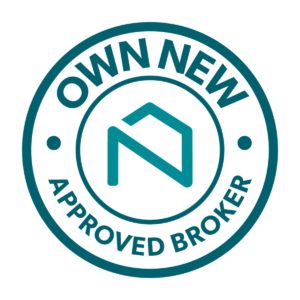How Does Being Self Employed Affect A Joint Mortgage?

Mortgage applications can be complex and challenging at the best of times, especially those that feature joint applicants and at least one self-employed individual.
But what is a joint mortgage, and how is this application impacted by having a self-employed partner?
What is a Joint Mortgage?
As the name suggests, a joint mortgage features at least two people on the same application, as you apply to borrow a potentially larger sum of money with someone such as a partner, spouse, friend or relative.
With this type of application, both individuals are in charge of making payments, with each partner having equal liability in this respect. So, if a scenario arises where one of you is unable to repay your share of the mortgage, the other will be liable to meet the monthly repayment in full.
Despite this, a joint mortgage doesn’t necessarily equate to 50/50 ownership of a property, as the precise equity can be amended if one partner has more financial assets and assumes responsibility for a larger share of the mortgage repayment.
This can be agreed informally between the two parties or written into the mortgage agreement, with this ownership share relevant to both the structure of the monthly repayments and the distribution of the proceeds following a future sale.
When applying for a joint mortgage, you can borrow a larger sum of money based on the combined earnings of both parties.
However, this also means that lenders will carry out eligibility and credit checks on both applicants, increasing the risk that the application will be rejected and the length of time taken for lenders to complete their due diligence.
Free phone and video consultations are offered in the UK.
Get Started NowWho Can Apply for a Joint Mortgage?
While joint mortgages are synonymous with married couples or partners, there are no marital restrictions in place when making this type of application.
There are no wider relationship or familial restrictions either, so any combination of two people can apply for a joint mortgage and to undergo the associated credit and eligibility checks.
Some lenders may even allow more than two people to apply for a joint mortgage, particularly as each has their own range of bespoke products and unique criteria.
In general terms, however, most lenders allow a maximum of four buyers to take up a mortgage together, primarily because they require each applicant to be named on a property’s deeds. Typically, this type of deed and document has space for only four names, so this is often the maximum number allowed by reputable lenders.
What factors are considered upon application?
A joint mortgage will consider the same factors as a single application, taking into account two sets of data from both applicants in the process. These include:
Credit Checks
Currently, lenders use cumulative FICO Scores for mortgage lending, leveraging different models for the main credit agencies (including Experian and Equifax).
Such checks are carried out across both (or more) names on a joint mortgage application to check eligibility and help lenders to fully appraise risk.
Affordability
Lenders may also check bank statements dating back three months, while asking applicants to provide information pertaining to their monthly spending.
This information will also appraise each applicant’s earnings and determine whether or not they can afford their mortgage repayments.
Deposit Value
The deposit that you can put towards your application will also be considered, as this can reduce the amount you need to borrow and monthly mortgage repayments (while minimising the lender’s risk in the process).
It is typically recommended to save a deposit worth at least 10% of a property’s purchase price for residential purchases, although committing a 20% deposit will improve your chances of a successful application.
Of course, joint applicants will be able to pool their resources and build a larger deposit amount, increasing their chances of being accepted by a lender while simultaneously reducing the amount that they need to pay back across the duration of the mortgage.
As they have a higher deposit sum, joint applicants may also be able to access lower interest rates.
How Does A Self-Employed Partner Affect A Joint Mortgage?
As we’ve already touched on, lenders will also carry out checks on your employment status and the amounts that you earn per annum.
This also informs wider affordability checks, but the process can become complicated when dealing with one or more applicants who may be self-employed.
For example, when working in a permanent role, you’ll simply be asked to provide bank statements and evidence of past payslips dating back, typically, three months. Occasionally, lenders may make contact with employers to ask basic verification questions, but this usually isn’t required if the necessary documentation is provided.
However, the checks for self-employed individuals are more stringent, as such workers are deemed to pose a higher risk to lenders as a result of fluctuating workloads and a perceived lack of long-term security.
To this end, lenders will often ask self-employed applicants to provide certified accounts data for the previous two years, in order to prove consistent earnings that meet the necessary affordability checks.
Similarly, they may ask for proof of retainer contracts or details of future work agreements, although this will depend largely on the information included in your accounts.
For those who have worked on a self-employed basis for less than a couple of years may not be eligible to apply, creating the need for a single person application on behalf of your partner.
At this time, there are only a few lenders in the market that can accept a self-employed applicant with just one year of business accounts.
What Our Clients Have To Say
What Documents Will A Self-Employed Partner Have To Provide?
Self-employed workers will have to provide detailed documentation to support their part of a joint application, although the requirements vary depending on the structure of your venture and tax status.
We’ve broken this information down below, so you can understand your requirements depending on precisely how you work as a self-employed individual:
Limited Company
If you own more than 25% of shares in a limited company, the personal salary and dividends that you draw from the venture will be used to calculate your average income.
Limited company owners often assume that the income declared on their PAYE payslips can be accounted for by mortgage lenders. This is a false assumption.
If you own more than 25% of a limited company, you will need to provide self-employed income proof. You will normally have to provide the most recent two years of Tax Calculation and Tax Year Overview documents, which are generated via HMRC after you submit your Tax Return for the year.
While some lenders may allow you to factor in your net business profit alongside your earnings, this is quite rare in the current marketplace.
Partnerships
As a partner, lenders will also typically insist on seeing your last 2 years of personal Tax Calculations and Tax Year Overview documents.
Currently lenders will not accept the income declared on the Tax Return for the Partnership as a whole.
Sole Trader, Freelancer or Contractor
Typically, a sole trader or freelancer will have to provide Tax Calculation and Tax Year Overview forms as documentation to support their application. This is also the case for contractors, although some lenders may also use an annualised version of the applicants day-rate to calculate average earnings where applicable.
You will probably have to provide evidence of written contracts confirming your ongoing work commitments and retainers in this instance.
How Much Will You Be Able to Borrow?
Once your initial application has been processed and the joint applicants have passed the initial affordability checks as detailed above, you can begin to think about precisely how much will be available to borrow.
This will usually be presented in a range with lower and upper thresholds, with lenders providing an estimated quotation before completing their final credit and affordability checks.
The average amount that you can borrow will vary from one lender to another, but in the case of a joint application, you may be able to borrow between 4x and 5x your combined annual incomes for the purpose of securing a mortgage.
The lure of a joint application may become less obvious if one of the applicants is self-employed, especially if they’ve only worked in this way for less than a year. In this case, their income would not be considered by the lender, leaving the remaining applicant to decide whether to proceed on their own.
To help find the right joint-mortgage deal for your short-term and long-term requirements, contact us for an informal chat and we can get started.
Boon Brokers is a fee-free whole-of-market brokerage and has a vast knowledge of the mortgage industry.
Gerard BoonB.A. (Hons), CeMAP, CeRER
Gerard is a co-founder and partner of Boon Brokers. Having studied many areas of financial services at the University of Leeds, and following completion of his CeMAP and CeRER qualifications, Gerard has acquired a vast knowledge of the mortgage, insurance and equity release industry.Related Articles
- Mortgage Broker Fees
- How Much Does The Average Mortgage Cost
- How To Get A Mortgage With A New Job
- How Much Deposit For A Mortgage?
- How To Get A £250,000 Mortgage
- Mortgage Borrowing Calculator
- What Is A Mortgage In Principle?
- Preparing For An Interest Rate Rise
- How To Get A Mortgage With Bad Credit
- Military Mortgages Guide
- What Proof Of Income Is Needed For A Mortgage?
- How To Get A Mortgage After Bankruptcy







